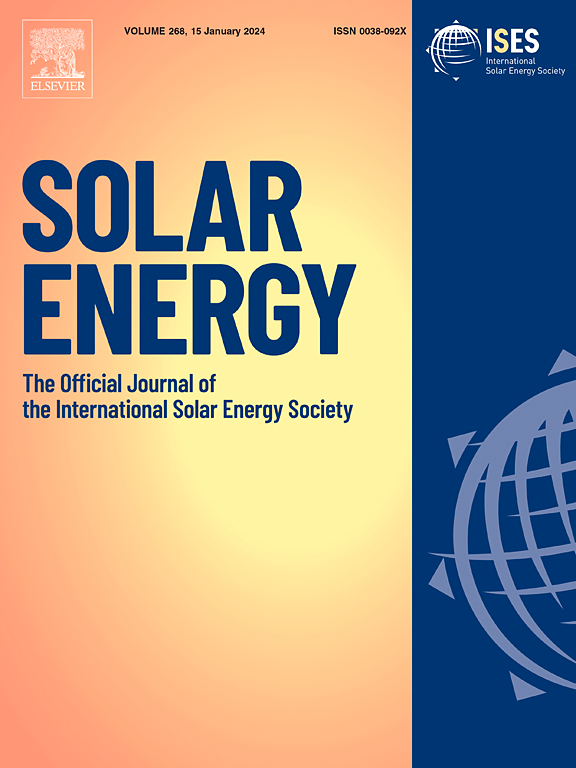Performance optimization of pulsating heat pipe integrated compound parabolic solar collector using hybrid Red Fox optimizer based DNN (DNN-Rdfx)
IF 6
2区 工程技术
Q2 ENERGY & FUELS
引用次数: 0
Abstract
Non-renewable energy usage has gradually increased over the past few decades, polluting the atmosphere. In the investigation, increasing the thermal performance of pulsating heat pipe-integrated compound parabolic solar collectors using hybrid Red Fox optimizer-based DNN. The heat transfer fluid varies the filling ratio, and nanoparticles add to the concentration level. The working fluids are titanium dioxide (TiO2) and single-wall carbon nanotubes (SWCNT), and the base fluid is deionized water. The filling ratio varies between 40, 50, and 60 % in pulsating heat pipe (PHP) system validation. Thermal resistance, thermal efficiency, and temperature are the experimental validation criteria for evaluating thermal performance. The Nano fluid combination of DIW + 100 ppm SWCNT + 100 ppm TiO2 significantly outperforms other working fluid combinations. Temperature and thermal efficiency increase by adding nanoparticles to the heat transfer fluid and reducing the thermal resistance. During experimentation with a 60 % filling ratio, the maximum respective temperature, thermal efficiency, and thermal resistivity of 68.167 °C, 58.7 %, and 0.627 °C/W are observed at around 01:00p.m. The predicted and optimized filling ratio from DNN-RdFx is also nearly 60 %. For this optimum filling ratio, the algorithm predicted optimum thermal resistance, thermal efficiency, and temperature are 0.588 °C/W, 62.48 %, and 69.35 °C, respectively, which is predicted to be achieved around 01.18p.m. The confirmatory test readings around this time period got closer to the optimum results with less than 4 % error. The test result indicates the nanoparticles are increasing the thermal performance of the PHP.
使用基于 DNN(DNN-Rdfx)的红狐混合优化器优化脉动热管集成复合抛物面太阳能集热器的性能
过去几十年来,不可再生能源的使用量逐渐增加,对大气造成了污染。在研究中,利用基于混合红狐优化器的 DNN 提高了脉动热管集成复合抛物面太阳能集热器的热性能。导热流体的填充率不同,纳米颗粒的浓度水平也不同。工作流体为二氧化钛(TiO2)和单壁碳纳米管(SWCNT),基础流体为去离子水。在脉动热管(PHP)系统验证中,填充率在 40%、50% 和 60% 之间变化。热阻、热效率和温度是评估热性能的实验验证标准。DIW + 100 ppm SWCNT + 100 ppm TiO2 的纳米流体组合明显优于其他工作流体组合。通过在导热液体中添加纳米颗粒并降低热阻,温度和热效率都得到了提高。在填充率为 60% 的实验中,在下午 1:00 左右观察到的最高温度、热效率和热阻分别为 68.167 °C、58.7% 和 0.627 °C/W。在此最佳填充率下,算法预测的最佳热阻、热效率和温度分别为 0.588 °C/W、62.48 % 和 69.35 °C,预计将在下午 1 点 18 分左右实现。测试结果表明,纳米颗粒提高了 PHP 的热性能。
本文章由计算机程序翻译,如有差异,请以英文原文为准。
求助全文
约1分钟内获得全文
求助全文
来源期刊

Solar Energy
工程技术-能源与燃料
CiteScore
13.90
自引率
9.00%
发文量
0
审稿时长
47 days
期刊介绍:
Solar Energy welcomes manuscripts presenting information not previously published in journals on any aspect of solar energy research, development, application, measurement or policy. The term "solar energy" in this context includes the indirect uses such as wind energy and biomass
 求助内容:
求助内容: 应助结果提醒方式:
应助结果提醒方式:


